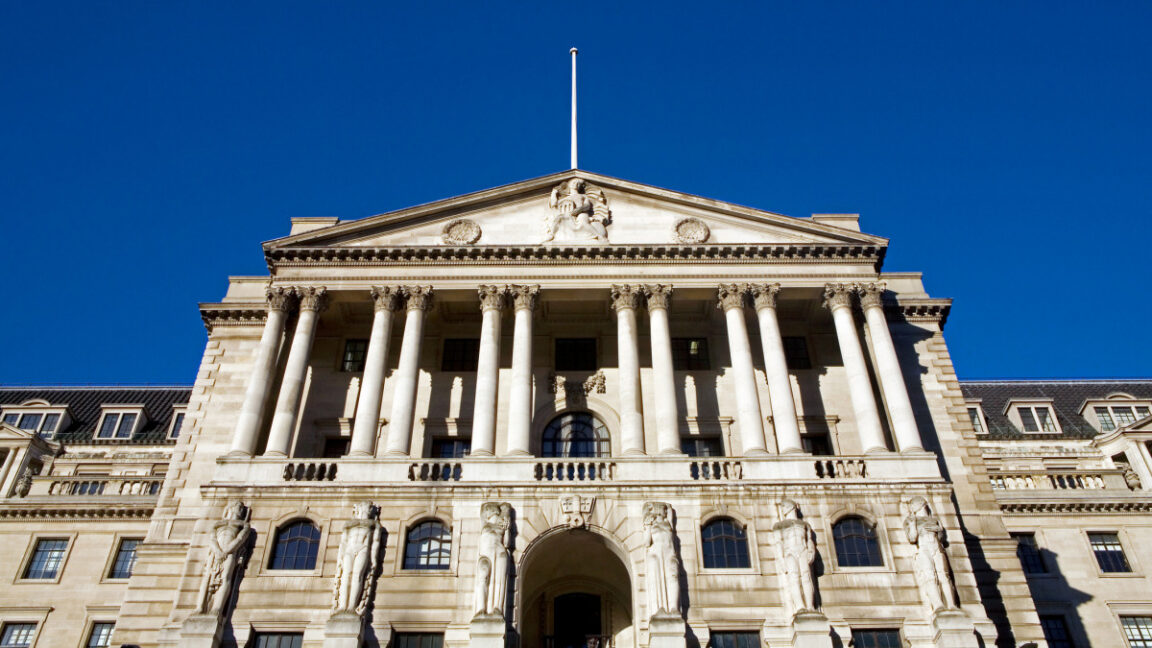The Bank of England’s Financial Policy Committee has warned of the dangers of a sudden correction in the financial markets, owing to the value of tech and AI stocks, and has compared the risks to the dotcom bubble.
As hundreds of billions of dollars flow into AI infrastructure building, the UK’s central bank said: “On a number of measures, equity market valuations appear stretched, particularly for technology companies focused on Artificial Intelligence (AI). This, when combined with increasing concentration within market indices, leaves equity markets particularly exposed should expectations around the impact of AI become less optimistic.”
Recent weeks have seen a merry-go-round of tech deals with AI, processor, and infrastructure vendors committing to spend with each other and swapping stock in order to fuel expansion. Nvidia and AMD hatched deals with OpenAI that sent their share prices soaring, while Oracle enjoyed a stellar share price hike after it revealed a $455 billion pipeline of deals for its cloud services from AI and other cloud companies, including OpenAI, which has reportedly committed to spending $300 billion with Big Red.
The record of the Bank of England’s Financial Policy Committee meeting on October 2 said that the risks posed by the overvaluation of tech and AI stocks increased because of their concentration at the top of the market.
“Equity market valuations had increased since Q2, to near all-time highs, partly driven by strong Q2 earnings of US technology firms,” it said. “The price appreciation of the largest technology firms this year had increased the concentration within US equity indices to record levels. The market share of the top 5 members of the S&P 500, at close to 30 percent, was higher than at any point in the past 50 years.”
The committee pointed out that metrics such as the earnings yield implied by the Cyclically Adjusted Price-to-Earnings (CAPE) were “comparable to the peak of the dotcom bubble.” However, predictions “remained below the levels reached during the dotcom bubble.”
The committee said the downside risk factors in the tech sector “included disappointing AI capability/adoption progress or increased competition, which could drive a re-evaluation of currently high expected future earnings.”
They also included “material bottlenecks to AI progress – from power, data, or commodity supply chains.”
A stark warning of the unproven use case for AI in the real world came from Australia this week, where Deloitte agreed to refund part of a government contract after admitting it used generative AI to produce a report riddled with fake citations, phantom footnotes, and even a made-up quote from a Federal Court judgment.
Gartner has so far maintained that there isn’t an AI bubble per se, but predicts there will be an “extinction event” among AI model builders.
John-David Lovelock, Distinguished VP Analyst at Gartner, told The Register in September that a clear-out of model providers does not mean a drop in investment overall.
“Some people are writing about it as though only 10 percent of the [AI] startups will survive,” he said. “While I agree with their number, I don’t agree with their analysis. It doesn’t mean 90 percent are failing. They are going to be involved in some form of merger or divestiture, morphing from what they were to what they will become. To be acquired is not a failure of the company. It’s not the indication of a bubble.”
Nonetheless, a sudden pullback from the staggering investment in AI infrastructure – consultants Bain & Company estimate spending of $500 billion a year will be needed to meet demand – could have a serious impact on the US economy. Ruchir Sharma, fund manager and columnist for the Financial Times, said this week that AI spending accounts for 40 percent of US GDP growth this year. ®
Source link


